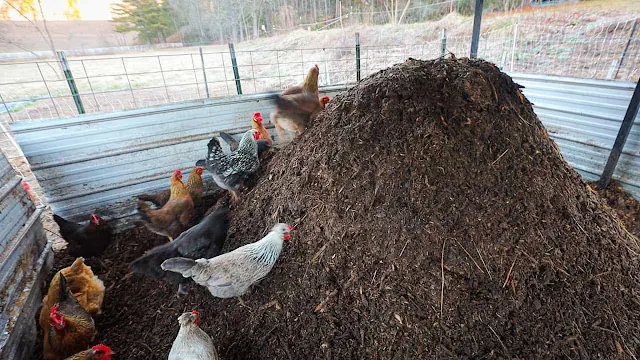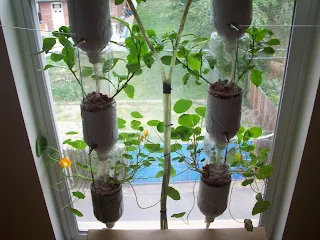Eggplant, known as biringani in Swahili is a member of the nightshade family. Eggplant is a glossy, purple skinned fruit though there are those that come in green, white or stripped colours depending on the variety. It is a warm season fruit that is suitable for cultivation in many regions of Kenya and the world in general.
.JPG) |
| Egg Plant Fruit. |
Variety Selection
Choosing the right eggplant variety is crucial for successful farming. Varieties differ in fruit size, shape, colour, and maturity time, allowing farmers to select those best suited for their growing conditions and market preferences. Some of the popular eggplant varieties include;
- Black beauty
This variety produces large, dark purple fruits with a smooth glossy skin. It has an excellent flavour and is also very productive. It takes 100 days from transplanting to harvesting. It has a longer shelf life.
- Long Purple
As the name suggests, this variety produces elongated, slender fruits with a deep purple colour. It takes about 70-80 days from transplanting to harvesting. It is well suited for grilling and roasting.
- White egg
This variety produces small to medium-sized eggplants with a creamy white colour. It has a mild flavour and tender texture.
Soil Preparation
Eggplants
thrive in well-drained, fertile soils that have a pH level of between 6.0 and
6.8. Before planting, it’s essential to prepare the soil by incorporating
organic matter such as compost or aged animal manure to improve soil structure
and fertility. It is important to take a soil test before getting into the
farming as it helps you determine nutrient and pH levels, allowing you to make
any necessary amendments before planting.
Planting and Ideal Spacing for Eggplants
Eggplants
can be propagated from seeds or transplants. When propagating from seeds, start
the seeds for about 6-8 weeks before transplanting them. When planting the eggplants,
space them about 18-24 inches apart in rows with 24-36 inches between rows to allow
for proper air circulation and growth. Proper spacing helps prevent
overcrowding, which can lead to increased pest and disease pressure and reduced
yields.
Watering
and Fertilization
Eggplants
require consistent moisture throughout the growing season to ensure healthy
growth and fruit development. You can water deeply at least twice or thrice a
week, depending on rainfall and soil moisture levels.
Fertilize
eggplants regularly with a balanced fertilizer to provide essential nutrients
for optimal growth and fruit production. Side-dress with compost or a
nitrogen-rich fertilizer every 4-6 weeks during the growing season to support
vigorous growth.
Common Pests
and Disease in Egg plant farming and their management
Like
many crops, eggplants are susceptible to a range of pests and diseases that can
affect yield and quality if not properly managed. Some of the common eggplant
pests include flea beetles, aphids, spider mites and tomato horn worms. Diseases
such as bacterial wilt, Verticillium wilt, and powdery mildew can also pose
challenges.
Regular
scouting and early intervention are key to preventing pest and disease
outbreaks and minimizing damage to the crop.
Harvesting
and Post-harvest egg plant handling techniques
Eggplants are typically ready for harvest 60-80 days after transplanting,
depending on the variety and growing conditions. Harvest the fruits when they
are firm, glossy, and fully mature before the seeds become hard and bitter. Cut
the fruit from the plant, leaving a short stem attached. Handle your harvested
eggplants with care to avoid damage. Store them in a cool place to extend their
shelf life.
Eggplants
are best consumed fresh but can also be stored up in refrigerators for
longer-term storage.
“Where
do I sell my eggplants?”
The
market for eggplants can vary depending on factors such as location, consumer
preferences, and market demand. Here are some potential markets where you can
sell your eggplants, however.
- · Grocery
stores and Supermarkets
Many
grocery stores and supermarkets source their produce locally or regionally to
meet consumer demand for fresh, high-quality fruits and vegetables. You can
contact local grocery stores or supermarket chains to inquire about selling
your eggplants through their produce department.
- · Restaurants
and Food service providers.
Restaurants,
catering companies, and other food service providers often purchase large
quantities of fresh produce to use in their dishes. Establish relationships
with local chefs and food service businesses to supply them with fresh
eggplants for their menus.
- · Online
Marketplaces
E-
commerce platforms are a good market space to sell your produce directly to
consumers. Make use of them accordingly.
- · Food
Processing companies
In
addition to selling your fresh egg plants, you can also consider selling
processed eggplants products such as pickled eggplant, eggplant spreads, or
frozen eggplant slices. Establish connection with food processing companies to
supply them with quantities of eggplants for processing into value-added
products.

















